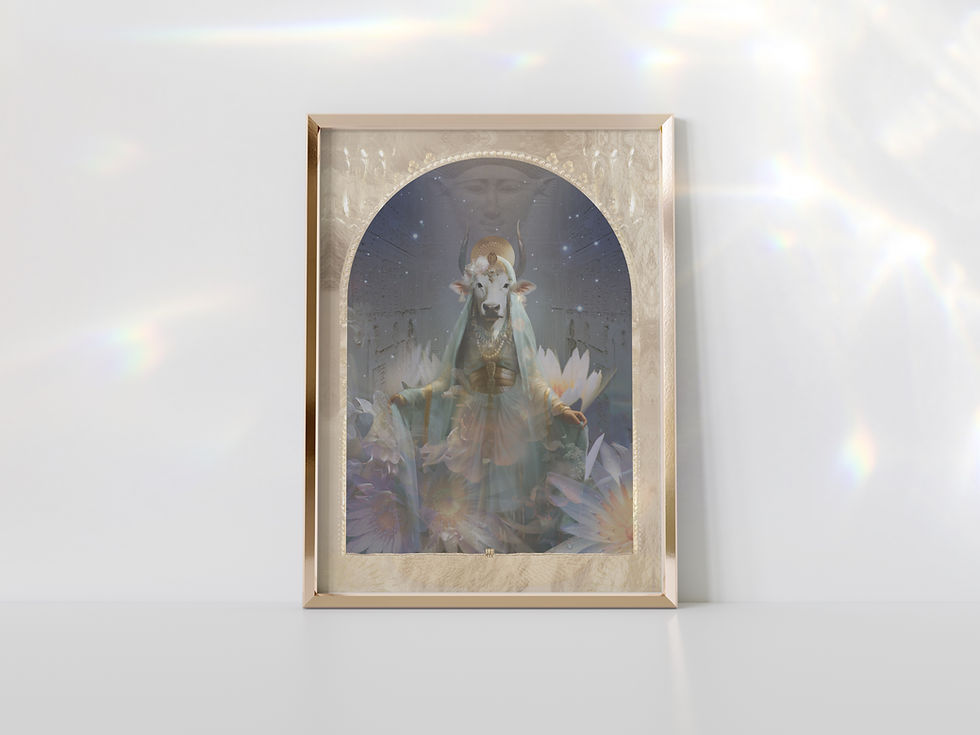How to Read Tarot Cards for Beginners
- Prism + Fleur

- Sep 7, 2023
- 3 min read
Updated: Jun 7, 2025
Welcome to the world of Tarot, where ancient wisdom meets modern insight.
If you're a beginner eager to explore the art of tarot reading, you're embarking on a journey that can offer profound insights and personal growth.
In this post, we'll list the first 3 basics of how to read tarot. If you would like to take advantage of our free in depth 'Tarot Foundations PDF Guide' to learn more than just these 3 steps - please download it below!
This guide is designed for tarot beginners and those looking to expand their tarot knowledge and practice. It's your roadmap to unlocking the mysteries of tarot in a way that's easy to understand and apply.
Tarot Card Reading for Beginners
Understanding the Tarot Deck
Before you dive into tarot reading, it's crucial to acquaint yourself with the fundamental building blocks; the Tarot Arcana.
At the heart of a Tarot deck are two distinct types of cards: the Major Arcana and the Minor Arcana. The Major Arcana, often considered the soul of the Tarot, comprises 22 cards, each representing significant life events, profound lessons, and spiritual archetypes.
Complementing the Major Arcana, the Minor Arcana consists of 56 cards, divided into four suits: Cups, Wands, Swords, and Pentacles. Each suit symbolizes a unique aspect of existence - emotions, creativity, intellect, and material aspects, respectively.
Connection & Interpretation
Reading tarot isn't just about memorizing card meanings; it's about forging a deep intuitive connection with the cards.
Before diving into readings, practice meditation to center your thoughts and open your mind to intuitive insights.
Tarot is a tool for self-reflection. Approach it with an open heart, and trust your instincts when interpreting the cards.
Interpreting tarot cards is a blend of art and intuition. While each card has traditional meanings, it's essential to consider your intuitive impressions. Here's a simplified approach:
Study the Imagery, examine the imagery on the card. What symbols, colors, and emotions stand out to you? Trust your initial reactions.
In a spread, consider the card's position. Cards have different meanings depending on whether they appear in the past, present, or future positions.
Pay attention to card combinations and how they interact. Sometimes, the cards' messages become clearer when read together.
Reading the Cards in a 'Spread'
Tarot is, at its core, a practice driven by intuition. This means that there are no rigid guidelines or definite rights and wrongs when it comes to drawing and placing your cards for a reading. The beauty of your tarot journey lies in the freedom to experiment and explore various methods. By trying out different reading types you'll gradually build a more comprehensive understanding of the cards' meanings, and how they interact in response to certain readings or to particular questions.
In this Guide are some different reading types which will develop your base repertoire of ‘tarot spreads’. There are many spreads to be discovered and you can use those which others have created, or create your own. Typically - the more cards in a reading, the more insight you can glean...
If you would like to see more ways to read your cards, please visit the Tarot Spread Library.
Keep in mind
Like any skill, tarot reading improves with practice. Start with simple spreads and gradually work your way up to more complex ones. Keep a tarot journal to track your progress and reflect on your readings. Remember that there's no one-size-fits-all approach to reading tarot!
CONTENTS OF TAROT FOUNDATIONS:
Origins of Tarot
The Fools Journey
The Tarot Arcanas
The Suits
The Court Cards
The Elements
Numerology in Tarot
Before You Begin
Reading Your Cards
Connection & Interpretation
Card Placement
Card Combinations
Reflection & Integration






















Comments